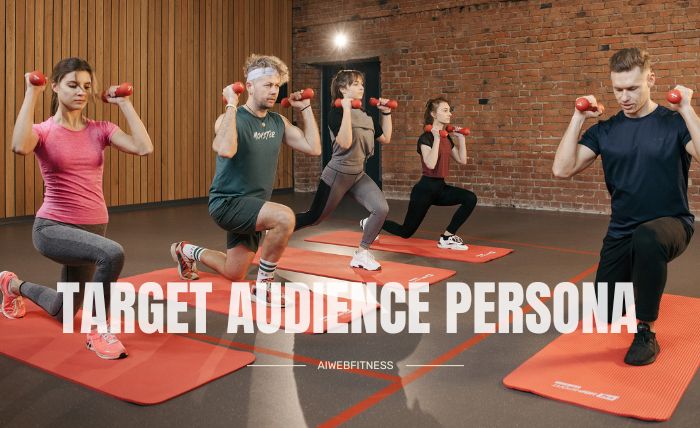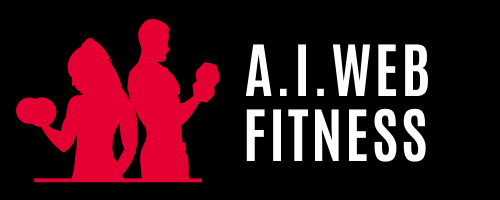Transform Your Fitness Business: 8 Secrets to an Ideal Client Profile.
Index
Introduction to Crafting Your Ideal Client Profile
Key 1. Market Identification: The Foundation
Key 2. Target Market Selection Process: Aligning Your Expertise with Market Needs
Key 3. Developing a Comprehensive Target Audience Persona
Key 4. Constructing a Detailed Target Audience Profile for Fitness Trainers
Key 5. Find My Audience: Engaging the Right Demographic
Key 6. Defining Your Ideal Client Profile in Fitness: A Comprehensive Approach
Key 7. How to Find Your Ideal Client: Practical Strategies

Introduction: Crafting the Perfect Client Profile for Fitness Success
In the competitive fitness industry, understanding your clientele is key. This guide reveals eight crucial steps to create an ideal client profile, transforming your fitness business approach.
It begins with market identification, where you recognize diverse client groups, from those seeking weight loss to athletes. Understanding these groups is essential for tailoring your services.
Next, the target market selection process involves aligning your expertise with the right client segment, ensuring your training meets specific needs.
Developing a target audience persona is critical. It goes beyond demographics, delving into clients’ motivations, lifestyles, and goals. This deeper understanding allows for more personalized training programs.
The guide also covers effective strategies for finding your audience. Engaging with potential clients, both online and in person, refines your client profile and draws in your ideal client.
Finally, creating an ideal client avatar guides every business decision, from marketing strategies to service offerings.
This avatar ensures your fitness services are perfectly aligned with the needs and preferences of your ideal clients, leading to a more targeted and successful fitness training career.

Key 1. Market Identification: The Foundation
The Role of Market Identification in Crafting Your Client Profile
Market identification is crucial in shaping a fitness trainer’s client profile. This step involves recognizing the diverse needs within the fitness industry, from individuals focused on weight loss to those aiming for athletic performance.
Understanding these distinct groups is vital for aligning your services with specific market segments, thereby laying a strong foundation.
Exploring Various Fitness Market Segments examples:
- Weight Loss Clients: This segment is significant in the fitness world. Catering to these clients requires a comprehensive approach, including exercise, diet, and lifestyle coaching.
- Athletic Performance Enthusiasts: These individuals seek specialized training for sports performance enhancement. Their training is focused on agility, strength, and sport-specific skills.
- Muscle Building and Body Toning: This group targets muscle gain and body sculpting. Programs for them often involve resistance training and nutritional guidance.
- Health and Wellness Seekers: A growing segment, these clients exercise for overall health and mental well-being, often preferring balanced and moderate routines.
- Senior Fitness: Older adults focusing on maintaining mobility and health form this segment. Their training programs are tailored for lower intensity and specific health needs.
- Rehabilitation and Physical Therapy: Individuals recovering from injuries or surgeries require customized exercise routines for rehabilitation.
- Youth Fitness: This segment involves designing fun, safe, and educational fitness programs for children and teenagers.

Key 2. Target Market Selection Process: Aligning Your Expertise with Market Needs
Understanding the First Step in the Target Market Selection Process
Once you’ve completed the market identification, the first step in the target market selection process is to choose a segment that aligns closely with your expertise and passion in fitness.
This decision is pivotal as it shapes your entire approach towards building a client base and crafting a personalized client profile.
Choosing the Right Market Segment
- Evaluate Your Strengths: Reflect on your skills, certifications, and areas in fitness where you excel. Are you more adept at high-intensity workouts, or do you specialize in low-impact exercises?
- Match Your Expertise with Client Needs: Identify which market segment can benefit most from your unique skills. For example, if you’re skilled in yoga and mindfulness techniques, your target market might be individuals seeking stress relief and flexibility improvement.
- Consider Your Passion: Your enthusiasm for a particular fitness area, like senior fitness, prenatal workouts, or rehabilitation, will resonate with your clients. Passionate training leads to more engaged and satisfied clients.
Importance of Matching Skills with Market Needs
- Enhanced Service Delivery: By focusing on a segment that aligns with your skills, you can offer more effective and specialized training. This leads to better client outcomes and satisfaction.
- Effective Communication: When you are knowledgeable and passionate about a specific area, it becomes easier to communicate the benefits of your programs to potential clients, thus attracting a more engaged clientele.
- Building a Targeted Client Profile: Understanding the specific needs and preferences of your chosen market segment allows you to develop a more targeted and effective client profile. This profile will guide your marketing strategies, service development, and client interactions.
The target market selection process is a critical step in defining the direction of your fitness services. By aligning your skills and passion with the right market segment, you create a strong foundation for developing a comprehensive and effective client profile.
This alignment ensures that your services are not just proficient but also deeply connected to the specific needs and goals of your clients, leading to a more successful and fulfilling fitness training career.

Key 3. Developing a Comprehensive Target Audience Persona
Creating a detailed target audience persona is a critical step for fitness trainers. It goes beyond basic demographic data to include a deeper understanding of clients’ motivations, challenges, and goals.
This comprehensive persona shapes how you tailor your training programs and communicate with your clients.
Understanding Client Motivations
- Health Goals: Identify whether your clients are motivated by weight loss, muscle gain, improved athletic performance, or general health improvement.
- Lifestyle Aspirations: Some clients may be driven by the desire to lead a healthier lifestyle, manage stress, or increase their activity levels.
- Personal Challenges: Recognizing the personal challenges your clients face, such as time constraints, previous injuries, or lack of motivation, is crucial in creating a persona.
Digging Deeper into Health History
- Medical Background: A client’s medical history, including any chronic conditions, injuries, or surgeries, can significantly influence their fitness regime.
- Previous Fitness Experience: Understanding a client’s past fitness experiences, whether positive or negative, helps in customizing their future training.
- Nutritional Habits: Knowing a client’s dietary preferences and restrictions plays a key role in creating a holistic fitness plan.
Lifestyle and Fitness Aspirations
- Daily Routine: Gaining insights into a client’s daily routine, including work, family commitments, and leisure activities, helps in scheduling and structuring workouts.
- Fitness Goals: Whether it’s running a marathon, improving flexibility, or building strength, understanding each client’s specific fitness goals is essential.
- Long-term Vision: Some clients have long-term health and fitness visions, such as maintaining mobility with age or achieving a life-long fitness milestone.
Utilizing the Target Audience Persona
- Tailored Communication: Use the insights from your persona to communicate effectively, addressing clients’ specific needs and motivations.
- Program Customization: Design training programs that are not only aligned with the fitness goals but also consider the client’s lifestyle, health history, and challenges.
- Ongoing Adaptation: Regularly update the persona based on client feedback and progress, ensuring that your approach remains relevant and effective.
Developing a comprehensive persona is vital for fitness trainers. This detailed understanding of your clients’ motivations, challenges, and goals enables you to create tailored fitness programs and communicate in a way that resonates deeply with everyone.
By investing time in crafting these personas, you lay a strong foundation for a personalized and effective fitness training service.

Key 4. Constructing a Detailed Target Audience Profile for Fitness Trainers
Why is it important?
Creating a target audience profile is essential for fitness trainers. This process involves a deep dive into the unique characteristics of your potential clients.
Understanding whether they are busy professionals, health-conscious seniors, or another distinct group helps tailor your fitness programs and outreach strategies effectively.
Key Elements:
- Demographic Details: Start with basic demographics such as age, gender, and location. For instance, a program designed for young adults will differ significantly from one aimed at seniors.
- Lifestyle Considerations: Identify lifestyle factors like occupation, family commitments, and leisure activities. A time-constrained professional may prefer quick, high-intensity workouts, whereas a stay-at-home parent might have more flexibility but require at-home exercises.
- Health and Fitness Goals: Understand what your clients are aiming to achieve. Are they looking for weight loss, muscle building, improved athletic performance, or general wellness?
This understanding is crucial for program customization. - Fitness Level and History: Assess their current fitness level and exercise history. A beginner will have different needs and limitations compared to someone who has been training for years.
- Challenges and Barriers: Identify any challenges they face, such as time constraints, lack of motivation, or specific health issues.
Addressing these barriers directly in your programs makes them more appealing and effective. - Communication Preferences: How do your clients prefer to receive information and feedback? Some may prefer digital communication like emails or social media, while others might value face-to-face interactions.
Utilizing the Profile Effectively
- Program Development: Use the insights from your target audience profile to develop fitness programs that specifically address the needs, goals, and preferences of your clients.
- Marketing and Outreach: Tailor your marketing messages to speak directly to the characteristics and needs of your target audience. Use the language and channels they are most comfortable with.
- Feedback and Adaptation: Regularly collect feedback from your clients and use it to refine your audience profile and your services. This keeps your offerings relevant and client-centric.
Constructing a detailed profile is a critical step for fitness trainers in developing personalized and effective fitness programs.
By understanding the unique characteristics and needs of your clients, you can tailor your services to meet their specific requirements, thereby enhancing client satisfaction and business success.
Remember, the more you know about your clients, the better you can serve them.

Key 5. Find My Audience: Engaging the Right Demographic
The Importance of Finding Your Audience in the Fitness Industry
For fitness trainers, finding your audience is pivotal in crafting an effective client profile. This step goes beyond mere identification; it’s about actively engaging with potential clients.
Understanding where your target audience spends their time, both online and offline, is key to this engagement. This process provides deep insights into their preferences and needs.
Online Engagement Strategies
- Social Media Platforms: These are crucial for reaching out to potential clients. Utilize platforms like Instagram, Facebook, and YouTube, where many fitness enthusiasts gather.
Share workout tips, nutrition advice, and client success stories to attract and engage with your audience. - Fitness Forums and Online Communities: Participate in discussions on platforms like Reddit, fitness blogs, and specialized online forums. This allows you to understand the concerns and interests of your target demographic.
- Email Marketing: Build an email list to share valuable content, such as fitness guides, diet plans, and motivational stories. This direct form of communication helps in building a loyal community.
Offline Engagement Strategies
- Community Centers and Gyms: These are excellent places to meet potential clients. Conducting workshops, fitness classes, or offering free consultation sessions can attract people who are already interested in improving their fitness.
- Local Events and Health Fairs: Participate in or sponsor local fitness events, marathons, health fairs, etc. These events are great for networking and getting your name out in the community.
- Referral Programs: Encourage your existing clients to refer friends or family. Word-of-mouth is a powerful tool in the fitness industry.
The Art of Listening and Learning
- Feedback and Interaction: While engaging with your audience, pay close attention to their feedback. This can provide valuable information for refining your client profile.
- Tailoring Your Approach: Use the insights gained from these interactions to tailor your services and communication to better meet the needs of your target audience.
Successfully finding your audience requires a blend of online and offline strategies. Engaging with potential clients where they are most active allows you to gather critical insights into their preferences, which is essential for developing an accurate and effective client profile.
By listening to and learning from your audience, you can ensure that your fitness services are precisely aligned with the needs and expectations of your ideal clients.

Key 6. Defining Your Ideal Client Profile in Fitness: A Comprehensive Approach
The Essence of an Ideal Client Profile (ICP) in Fitness Training
Creating an ideal client profile in the fitness industry is a nuanced process. It involves more than just identifying who you want to train; it’s about understanding who will gain the most from your unique expertise and training style.
It is about establishing a connection between your services and clients whose fitness goals and personal values resonate with your approach. Achieving this harmony is crucial for fostering a successful and fulfilling trainer-client relationship.
Steps to Define Your ICP:
- Assess Your Expertise and Style: Reflect on your strengths, training methodologies, and areas of specialization. Are you more inclined towards high-intensity workouts, or do you excel in yoga and mindfulness practices?
- Identify Client Goals and Values: Consider the goals and values that align with your training style. For example, if you specialize in endurance training, your ideal client might be someone training for a marathon or triathlon.
- Analyze Client Feedback: Gather and analyze feedback from current and past clients. Look for patterns in what they appreciate about your training and what results they’ve achieved.
- Consider Client Commitment Levels: Your ideal client should also match your preferred level of commitment. Some trainers thrive with clients who are highly dedicated and consistent, while others may prefer working with beginners who are just starting their fitness journey.
- Determine Lifestyle and Availability: Consider the lifestyle and availability of your ideal clients. Are they busy professionals who prefer quick, efficient workouts, or are they retirees with more flexible schedules?
- Assess Motivational Fit: Evaluate how well your motivational strategies align with what inspires and drives your clients. This alignment is key in maintaining long-term engagement and success.
- Look for Emotional and Psychological Compatibility: The ideal client-trainer relationship often transcends physical training. Emotional and psychological compatibility can significantly enhance the training experience for both parties.
- Refine and Evolve Your Profile: Remember that your ideal client profile is not static. As your skills and services evolve, so should your understanding of your ideal client.
Defining your ICP in the fitness industry is a dynamic and insightful process. It requires a deep dive into your own expertise and an understanding of the specific needs and aspirations of potential clients.
By aligning your services with clients whose goals, values, and commitment levels match your own, you lay the groundwork for a mutually beneficial and successful partnership.
This alignment not only ensures client satisfaction but also enhances your fulfillment as a trainer, making it a cornerstone of your professional journey.

Key 7. How to Find Your Ideal Client: Practical Strategies
Discovering your ideal client is a pivotal step in tailoring your fitness services for maximum impact. This process involves several strategic approaches that go beyond basic client interaction.
By employing these techniques, you can fine-tune your offerings to better attract and engage the clientele best suited for your fitness training style and business goals.
Evaluating Your Current Client Base
- Identify Common Characteristics: Start by analyzing your existing clients. Look for patterns in their fitness goals, lifestyles, and preferences. This might include their age range, fitness levels, types of workouts they prefer, and their reasons for seeking fitness training.
- Gather Feedback: Regularly solicit feedback from your clients. This can be done through surveys, informal conversations, or feedback forms. Understanding their satisfaction levels, challenges, and what they value most about your services can guide you in identifying similar potential clients.
Networking and Industry Engagement
- Networking with Peers: Connect with other fitness professionals. This can be through online forums, local fitness associations, or social media groups.
Such networks can offer insights into different client types and emerging market trends. - Participate in Fitness Industry Events: Attend fitness expos, workshops, and seminars. These events are not only great for learning but also for observing and interacting with a diverse range of fitness enthusiasts. They provide an opportunity to understand what drives different fitness clients and how they choose their trainers.
Leveraging Social Media and Online Platforms
- Social Media Engagement: Use social media platforms to observe the interests and behaviors of potential clients. Engaging in fitness-related discussions and posting relevant content can attract individuals who resonate with your training style.
- Online Fitness Communities: Participate in online fitness communities and forums. These platforms can be a rich source of information on what potential clients are looking for in their fitness journey.
Refining Your Service Offerings
- Adjust Your Programs: Based on your findings, refine your training programs to better suit the needs of your ideal client. This might involve introducing new workout routines, adjusting your training schedule, or offering personalized nutrition plans.
- Marketing Strategy Update: Tailor your marketing efforts to appeal to your ideal client. Highlight aspects of your service that meet their specific needs and preferences.
This could be through targeted ads, specialized content, or collaboration with brands that align with your ideal client’s interests.
Finding your ideal client requires a combination of introspection, market research, and active engagement with the fitness community.
By understanding the common traits and preferences of your current clients, networking with industry peers, and leveraging online platforms, you can gain valuable insights that help in fine-tuning your services.
This strategic approach not only attracts the right clientele but also ensures your fitness services are well-aligned with the needs and aspirations of your ideal client base.
Key 8. Crafting an Ideal Client Avatar
An ideal client avatar (ICA) is a detailed, fictional representation of your perfect client. This should include not just their fitness goals, but also their lifestyle, motivations, and even their mindset.
This avatar acts as a guide in all business decisions, from marketing to service delivery, ensuring you consistently attract and retain your ideal clients.
A Step-by-Step Guide for Fitness Trainers:
Creating an ideal client profile is a vital process for any fitness trainer looking to tailor their services effectively and attract the right clientele.
Here’s a comprehensive step-by-step guide to help you craft an ideal client profile that resonates with your fitness business.
Step 1: Conduct Market Research
- Identify Different Market Segments: Start by identifying various segments within the fitness industry such as weight loss, muscle building, sports performance, senior fitness, etc.
- Analyze Trends and Demands: Look into current trends and demands within these segments. This might involve online research, surveys, or discussions with existing clients.
Step 2: Define Your Niche
- Evaluate Your Skills and Passion: Consider your own skills, qualifications, and areas of fitness you are most passionate about.
- Select Your Target Segment: Choose the market segment that aligns best with your skills and passion. This will be the foundation of your client profile.
Step 3: Develop a Target Audience Persona
- Gather Client Data: Collect data from your current clientele, including age, gender, fitness level, goals, and challenges.
- Create Detailed Personas: Build detailed personas representing typical clients in your chosen segment. Include their motivations, lifestyle, health challenges, and fitness goals.
Step 4: Create a Target Audience Profile
- Detail Specific Characteristics: Expand on your personas by detailing specific characteristics such as their occupation, daily routines, dietary preferences, and any specific health concerns.
- Understand Their Preferences: Identify their preferences in terms of workout style, communication, and engagement.
Step 5: Find and Engage Your Audience
- Identify Engagement Channels: Determine where your target audience spends their time, both online (social media, fitness forums) and offline (gyms, community centers).
- Engage and Interact: Start engaging with your audience through these channels. Offer valuable content, answer queries, and build a community.
Step 6: Refine Your Ideal Client Profile
- Collect Feedback: Regularly collect feedback from interactions and training sessions.
- Adjust Your Profile: Use this feedback to refine your client profile. It’s an ongoing process as preferences and trends change over time.
Step 7: Develop Your Ideal Client Avatar
- Create a Composite Character: Based on your research and interactions, create a composite character that embodies the ideal client for your fitness services.
- Detail the Avatar: Include specific details in your avatar like their fitness journey, challenges, daily life, and how they benefit from your services.
Step 8: Implement and Review
- Implement Your Profile in Business Strategy: Use your client profile to guide your marketing, service development, and client interaction strategies.
- Regularly Review and Update: Continually review and update your client profile based on new data, client feedback, and changing market dynamics.
Crafting an ideal client profile is not a one-time task but an evolving process that requires ongoing attention and refinement.
By following these steps, fitness trainers can develop a profile that not only attracts the right clients but also helps in creating tailored services that meet and exceed their expectations.
Remember, the more aligned your services are with your ideal client profile, the more successful your fitness business will be.
FAQs
It is a detailed description of your ideal client. It includes information about demographics, fitness goals, lifestyle preferences, and behavior patterns.
This profile helps fitness trainers tailor their services to meet the specific needs and preferences of their target audience.
It is the first step in market identification because it helps you understand who your services are best suited for.
By defining your ideal client, you can focus your marketing efforts more effectively and attract the right people to your fitness programs.
To create a target audience persona, gather data about your current clients and research your market. Consider factors like age, gender, fitness goals, challenges, and lifestyle.
Use this information to build a semi-fictional character that represents your ideal client.
Knowing who your customer is enables you to tailor your fitness programs, marketing strategies, and customer service to meet their specific needs.
It leads to more effective engagement, higher client satisfaction, and improved loyalty.
Yes, your ideal client avatar can and should evolve over time. As your business grows and market trends shift, the preferences and needs of your clients may change.
Regularly updating your client avatar ensures that your services remain relevant and appealing.
Segment your fitness clients based on criteria like age, fitness goals, lifestyle habits, and engagement patterns.
Use this segmentation to create tailored marketing messages and fitness programs that resonate with each specific group.
Tools like HubSpot’s client profile templates, ContentBASE’s personal trainer profiles, Wellness Creatives’ Fitness Marketing Bundle, and NASM’s assessment forms are great for creating and managing client profiles.
They offer structured formats and insights to capture essential client information.
Yes, customer feedback and personas are crucial in developing a client profile.
Feedback provides real insights into client satisfaction and preferences, while personas help visualize and empathize with your target clients, leading to better service customization.
Conclusion
Crafting an effective client profile is essential for any fitness trainer aiming for success. It’s a process that involves market identification, creating detailed target audience personas and profiles, and understanding how to attract and retain your ideal client.
By mastering these eight secrets, fitness trainers can ensure their services are not just effective but also resonate with the clients who will benefit the most.
Further Reading and Resources
For more insights and practical tips on building an effective client profile, explore these valuable resources:
- HubSpot’s Comprehensive Guide to Customer Profiling
- Indeed’s In-depth Analysis of Client Profiles
- AgencyAnalytics’ Tips and Templates for Client Profiles
- Adobe’s Real-World Customer Profile Examples
- Attest’s Essential Guide to Consumer Profiling
- SmartSheet’s Client Profile Templates for Varied Needs
- Cloudways’ Expert Insights on Ideal Client Profiles
